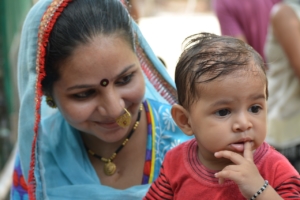
While many view immigration as a cultural crisis, the pros of immigration are significant. Immigration is a point of contention as immigrants change the face of a population and bring their own culture with them. Moreover, immigrants receive criticism if they do not fully integrate, by not speaking the country’s primary language. Some people simply feel there’s no room for immigrants. They fear their jobs will be taken or undercut by the low wages some immigrants are willing to work for.
In spite of these concerns, it is undeniable that immigrants infuse much needed vitality into the economy. They build businesses, create jobs and bring new perspectives. Most importantly, welcoming immigrants supports and promotes an international standard of human rights. Everyone should be able to settle somewhere safe, healthy and stable—especially if their native country is not so.
Below is an immigration case study of sorts, demonstrating the economic benefits of immigration in Japan, the U.S., and Western Europe.
Japan
Plagued by an aging population and declining birth rates, immigration provides Japan with a new source of young workers. The Japanese Health Ministry predicts that by 2060, the country’s population will fall to 86.74 million. This is a 40 million decrease since 2010. Currently, 20 percent of Japan’s population is over 65 years old. As a result, this burdens Japan’s shrinking workforce with the funds for their pensions and healthcare. But immigration into Japan ensures the nation’s economy can maintain itself as people retire.
Japan is historically unwelcoming to immigrants, believing peace and harmony to be rooted in homogeneity. As such, the nation’s immigration policy reflects this. Japan only allows a small number of highly skilled workers into the country. This policy has been in place since 1988 to combat labor shortages. However, this is no longer enough to combat Japan’s worsening economy. In 2018, labor shortages in the nation were the highest they had been in 40 years.
However, the pros of immigration in Japan are clear. Without it, Japan faces an incredibly insecure economic future. With no sign of population growth, the nation’s perpetually shrinking workforce will become unable to support its retired citizens. However, immigrants can round out the workforce in Japan. And they can neutralize any economic woes the nation might face in the future by preventing labor shortages.
USA
The cultural and economic contributions immigrants have made to America are vast, overwhelmingly advantageous and long-lasting.
A study done by economists at Harvard, Yale and the London School of Economics found US counties that accepted more immigrants between 1860 and 1920 are doing better today as a result. These counties have significantly higher incomes, higher educational achievement, less poverty and lower unemployment because immigrants provided the low-skilled labor needed to support rapid industrialization. Undeniably, immigrants have always and still continue to increase economic growth in America.
Similarly, immigrants in the U.S. have been integral to innovation and entrepreneurship. Half of all startups in America worth over a billion dollars have been founded by immigrants. Eleven of these startups employ more than 17,000 people in the U.S. Some of these companies, such as Uber and WeWork, have significantly changed American culture. They modify the way Americans live their daily lives. Therefore, the pros of immigration in the U.S. are grounded in the diversity of thought brought by immigrants, necessary to further American innovation and economic growth.
Western Europe
Like Japan, Western Europe is battling an aging population and declining birth rates. Fertility rates are expected to hit zero in the next decade. Consequently, this region may not be able to sustain its expansive social welfare programs as its workforce shrinks and retired populations grow. In Germany, the median age is 47.1 years, the oldest in Western Europe. This is only slightly younger than Japan’s 47.3 years. Besides convincing its native populations to have more children, immigration is their only alternative.
Immigration into Western Europe is an undeniable win for both the immigrants and the host countries. Many new immigrants in Western Europe have escaped unstable regimes, religious persecution, and economic downturn in North African and Middle Eastern countries. Thus, immigrants give the region a younger workforce that is able to sustain the region’s expensive social benefits. In return, Western Europe provides immigrants with jobs, stability, and a safe place to live.
While still a very divisive topic, the pros of immigration lie in its plethora of economic benefits. It is undeniable that immigration has always been the driver of economic growth, despite all of the criticism. Immigration provides immigrants with an alternative to oppressive regimes and other instability, of course. And the pros of immigration for nations absolutely outweigh the cons.
– Jillian Baxter
Photo: Pixabay
 Janani, an affiliate of DKT International, has started a mobile family planning project. Twenty outreach teams in vans provide family planning services to rural and hard-to-reach areas in India. This helps expand access to family planning options.
Janani, an affiliate of DKT International, has started a mobile family planning project. Twenty outreach teams in vans provide family planning services to rural and hard-to-reach areas in India. This helps expand access to family planning options.


 Could this be your next meal? It may have to be; grasshoppers are the food of the future.
Could this be your next meal? It may have to be; grasshoppers are the food of the future.